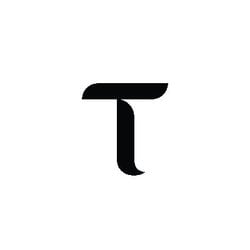
While many companies use net income, others may use operating profit/EBIT or earnings before tax. what are investing activities Cash under a cash flow statement consists of cash in hand and demand deposits with banks. When you expand your company, you’ll look to invest in property, plant, and equipment (PP&E). Non-current assets (long-term assets) are assets that are expected to deliver value and benefits in the long run (1+ years). They’re highly illiquid, meaning that they can’t be easily or rapidly converted to cash. The important thing to remember now is that CFI solely tracks cash from investing activities.
Maintain a Balance Between Short-term and Long-term Investments
They provide stakeholders with insights into how a company is using its available capital. A consistent investment in new projects or infrastructure may signal confidence in future earnings potential, while a lack of investment might indicate stagnation or a focus on short-term returns. Cash flows from investing activities serve as a vital component of a company’s financial health and overall strategy. By carefully analyzing these activities, investors and company stakeholders can gauge a firm’s commitment to growth and its operational effectiveness.
How Does Negative Cash Flow and Negative Cash Flow From Investing Activities Differ?
- The important thing to remember now is that CFI solely tracks cash from investing activities.
- The cash flow statement reports the amount of cash and cash equivalents leaving and entering a company.
- Investing activities include purchases and sales of fixed assets like property, plant, and equipment; buying and selling of marketable securities; and cash used in mergers and acquisitions.
- We expect to offer our courses in additional languages in the future but, at this time, HBS Online can only be provided in English.
High returns https://www.bookstime.com/ from cash flow investments are the amount of money a business makes from its cash flow investments relative to the amount of money it invests. For example, during economic downturns, companies may divest from certain assets leading to skewed cash flow patterns that may not accurately reflect operational effectiveness. Frequent monitoring allows departments to adjust quickly based on cash flow insights. This real-time understanding can ensure the allocation of resources remains aligned with the company’s evolving needs.
Understanding Cash Flow from Investing Activities

Cash and Cash Equivalents also consist of investments that have a maturity period of three months or less from the date of acquisition. Besides these, a company’s preference shares purchased shortly before their date of redemption are also treated as Cash and Cash Equivalents, only if there is no risk in the failure of their payment by the company. In simple terms, Cash and Cash Equivalents consist of Short-term Deposits/Short-term Investments, Marketable Securities/Treasury Bills, and Current Investments.
What are some common examples of cash flows from investing activities?
Any cash spent or generated from the company’s products or services is listed in this section. This may include cash from the sale of goods, interest payments, employee salaries, inventory payments, or income tax payments. In short, you’re investing significant amounts of cash into the long-term health of your company for the long-term gains of your operations. During unearned revenue the months of heavy investment and large purchases, a net negative cash flow will be reported in your cash flow from investing statement.
- Having negative cash flow means your cash outflow is higher than your cash inflow during a period, but it doesn’t necessarily mean profit is lost.
- A consistent investment in new projects or infrastructure may signal confidence in future earnings potential, while a lack of investment might indicate stagnation or a focus on short-term returns.
- The company owner can sell these stocks in the future to generate more cash flow for the company.
- Thus, the above are some problems as well as solutions to deal with cash flow related to investments.
- They should always be seen in conjunction with other statements and management discussion & analysis.
- This measures cash spent on or received from buying and selling long-term assets.
- For multinational companies, currency fluctuations can impact the cash flow from foreign investments.

If you want to dive into creating a cash flow statement, download our free financial statement templates to start practicing. The purpose of a cash flow statement is to provide a detailed picture of what happened to a business’s cash during a specified period, known as the accounting period. It demonstrates an organization’s ability to operate in the short and long term, based on how much cash is flowing into and out of the business. Access your interactive balance sheet, income statement, and cash flow statement templates today.
The transactions of a cash flow statement are categorised into three activities; namely, Cash flow from Operating Activities, Cash flow from Investing Activities, and Cash flow from Financing Activities. The Institute of Chartered Accountants in India has issued Accounting Standard AS – 3 revised for the preparation of cash flow statements. Besides, with the introduction of the Companies Act 2013, the preparation of a Cash Flow Statement is now mandatory for every type of company except OPC (One Person Company) Section 2(40). To find the net cash flow from investing activities, sum up all cash inflows and outflows related to investing activities. Cash inflows typically include proceeds from asset sales, while outflows include purchases of investments.

Cash flows from investing activities are calculated by analyzing the changes in a company’s long-term assets on the balance sheet and identifying cash transactions related to those assets. This section of the cash flow statement typically includes cash outflows for the purchase of property, plant, and equipment (capital expenditures), investments in securities, and acquisitions of businesses. It also includes cash inflows from the sale of fixed assets, securities, or business segments. The net cash flow from investing activities is determined by subtracting total cash outflows from total cash inflows related to these transactions during the reporting period. This figure provides insight into how a company is allocating capital to support its future growth or divestitures. By understanding cash inflows and outflows from investing activities, I can gauge whether a company is making strategic investments for future growth or liquidating assets to restructure.
Each formula serves a different purpose and gives you unique insights into your company’s financial health. High capex can indicate expansion, but excessive spending without strong operating cash flow may strain liquidity. Conversely, frequent asset sales to generate cash might warn of financial distress. Positive operating cash flow means a business is generating enough cash to cover expenses, whereas negative cash flow may signal inefficiencies in working capital. But a negative cash flow from investing section is not a sign of concern, as that implies management is investing in the long-term growth of the company. A firm can suffer from spending unwisely on acquisitions or CapEx to either maintain or grow its operations.













